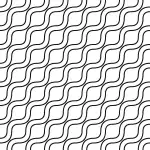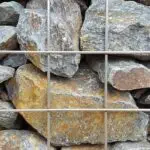Gout is a painful arthritis causing joint inflammation, especially in the big toe, due to uric acid crystal buildup. Kratom, a natural herb with analgesic properties, may help manage gout symptoms by interacting with opioid receptors and reducing pain and inflammation. However, before incorporating kratom into a gout management regimen, consult a healthcare professional for safe and effective use.
Gout is a debilitating physical health condition characterized by sudden and severe attacks of inflammation, primarily affecting the joints. This article explores an intriguing natural solution: kratom, a herb known for its potential benefits in managing gout. We’ll delve into the science behind kratom’s anti-inflammatory properties and its various forms of consumption. Additionally, we’ll discuss its impact on reducing joint swelling, improving mobility, and compare it to traditional gout medications. Understanding the physical health benefits of kratom can offer a new perspective on managing this painful condition.
- Understanding Gout and Its Impact on Physical Health
- – Definition and causes of gout
- – Common symptoms and affected body parts
Understanding Gout and Its Impact on Physical Health
Gout is a painful and inflammatory arthritis that primarily affects the joints, particularly the big toe. Understanding this condition and its impact on physical health is crucial in managing gout effectively. This arthritis occurs when uric acid crystals build up in the joints, leading to swelling, intense pain, and stiffness. The sudden attacks of gout can significantly affect one’s quality of life and overall well-being.
The physical health benefits of kratom, a natural herb with analgesic properties, have been explored as an alternative treatment for managing gout. Some studies suggest that kratom may help alleviate the pain and reduce inflammation associated with gout. By interacting with opioid receptors in the body, kratom can offer relief similar to that of prescription painkillers but with potentially fewer side effects. However, it’s essential to consult a healthcare professional before incorporating any new supplement into your gout management regimen.
– Definition and causes of gout
Gout is a painful and inflammatory condition that primarily affects the joints. It occurs when uric acid crystals build up in the body, leading to sudden and intense pain, swelling, and redness. The most common joint affected is the big toe, but gout can also target other parts of the body, such as the fingers, wrists, and knees.
The primary cause of gout is an overproduction or reduced excretion of uric acid, a natural waste product formed when the body breaks down purines, which are found in certain foods and produced by the breakdown of DNA. Factors contributing to elevated uric acid levels include genetics, obesity, high blood pressure, kidney problems, and lifestyle choices such as excessive alcohol consumption and a diet rich in purine-rich foods. These factors create an environment conducive to crystal formation, leading to gout attacks.
– Common symptoms and affected body parts
Gout is a painful inflammatory condition primarily affecting the joints. The most common symptom is sudden and intense pain, often described as a burning or stabbing sensation, in one specific joint at a time, typically the big toe. This acute attack can last for several days, leaving the affected area red, hot, and extremely tender. Other physical health benefits of kratom, a natural herb with analgesic properties, have been explored by some users to manage gout symptoms.
While gout most often targets the first metatarsal joint at the base of the big toe, it can also affect other parts of the body, including the ankles, knees, elbows, and even the hands. The condition is caused by a buildup of uric acid crystals in the joints, leading to inflammation. People with a family history of gout, those who consume high-purine diets, or individuals with certain health conditions like kidney disease are more prone to developing it.
Gout management goes beyond symptom relief; it’s an investment in your physical health. By understanding and addressing the root causes, you can prevent flare-ups and reduce joint damage. Incorporating lifestyle changes, such as dietary adjustments and regular exercise, alongside evidence-based treatments, offers a holistic approach to managing gout effectively. Remember that consistent care is key to achieving long-term relief and maintaining optimal physical health.






